Growin plants is a relaxing pastime, as well as a way to add beauty to your home spaces. Living plants growing in indoor environments create a sense of tranquility and well being. They also serve a healthy, utilitarian purpose by cleaning the air of toxins and pollutants. Most houseplants are varying shades of green, but there are variegated cultivars, as well as varieties that have big, lush leaves. Whether you grow the plants for foliage or flowers, they brighten up the home and supply you with living decor. Here is a list of plants with large, lush leaves.
- Alocasia Species
- Colocasia species
- Giant Bird of paradise
- Fiddle leaf fig
- Monstera deliciosa
- Philodendron xanadu
- Rubber tree
- Philodendron Gloriosum
- Calathea orbifolia
- Tropic snow dumb cane
- Ruffled fan palm
- Caladiums
- Rex Begonia
- Leopard Plant
- Ruffled Fan Palm
- Hostas
- Dwarf Banana Plant
- Majesty Palm
- Dieffenbachia seguine
- Calathea ornata
- Dracaena trifasciata
- Ti plants
- Umbrella Plant
- Canna Lily
- Heliconia
- Red Aglaonema
- Persian Shield
- Croton Plants
Alocasia
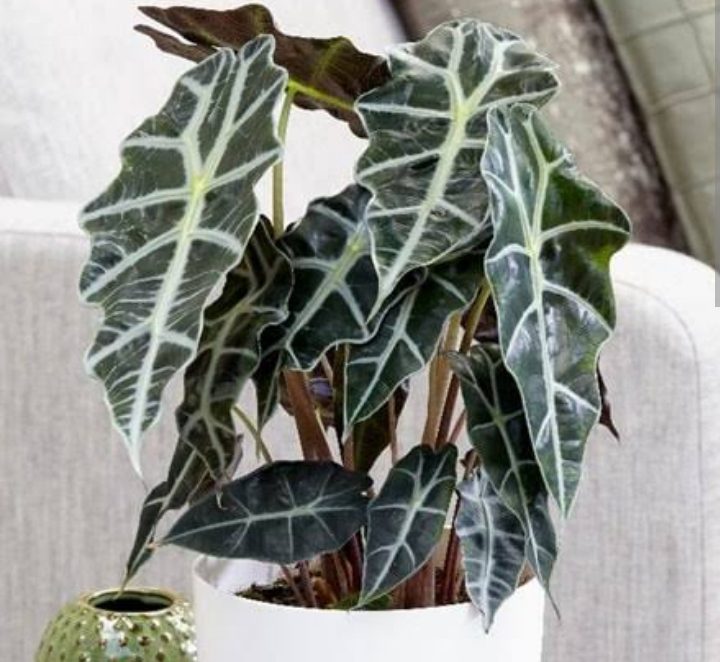
The Alocasia species of elephant ear comes in many varieties with different sizes and colors. The evergreen leaves of the alocasia are heart- or arrow-shaped, measuring 8 to 36 inches depending on variety. This species complements flower gardens as accents or border edging.
The alocasia species grows as tall as 6 feet with an equal spread. They do well in part shade or filtered sun, making it suitable for growing indoors as a container plant. The flowers are creamy white and shaped like calla lilies, however, this species rarely blooms.
Colocasia
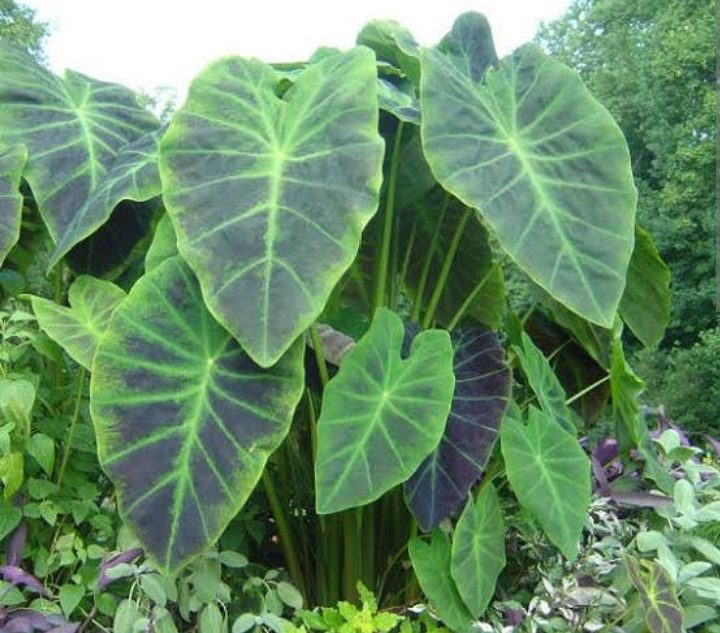
The colocasia species, also known as taro. Leaves are heart-shaped and measure 2 to 3 feet long and 1 to 2 feet across. The plant can reach heights up to 8 feet. The colocasia grows in partial shade, and tolerates full sun if well-watered.
They are considered a perennial in some areas, but grow as an annual elsewhere except in tropical areas, where they are almost evergreen. The colocasia species are wetland plants, making them suitable as container plants around edges of pools and water surfaces, but do not plant them near water sources outside of containers because colocasia species tend to spread aggressively.
Caladiums
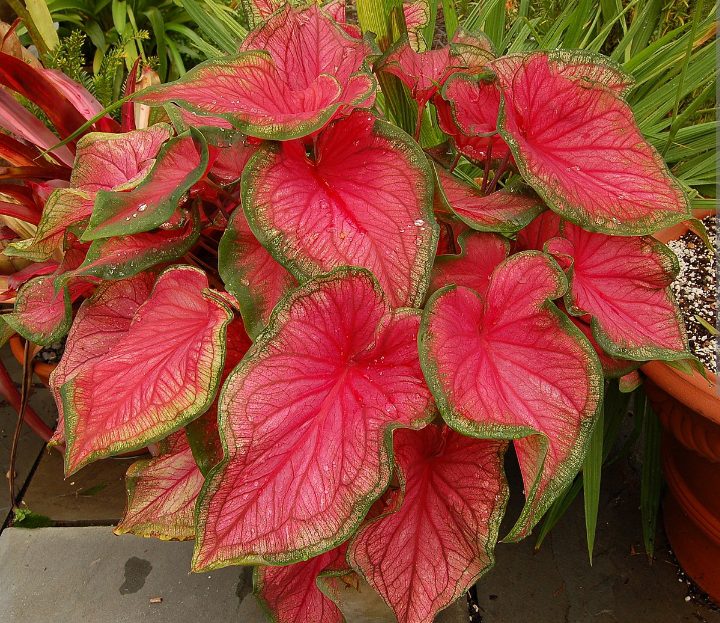
Caladiums grow from tubers swollen, fleshy, underground stems. The shoots develop from buds on the tuber. The plant’s flowers are hidden by the drama of the combination of red, pink, green and white leaves. There are two basic types of caladiums: fancy-leaved and strap-leaved.
Fancy-leaved caladiums are the most well-known variety thanks to their large, heart-shaped leaves. These plants typically grow between 12 and 30 inches tall and do best when planted outdoors. Strap-leaved caladiums sport smaller and more narrow elongated leaves and typically reach no more than 12 inches in height. They do equally well outside or inside as houseplants.
Giant Bird of Paradise
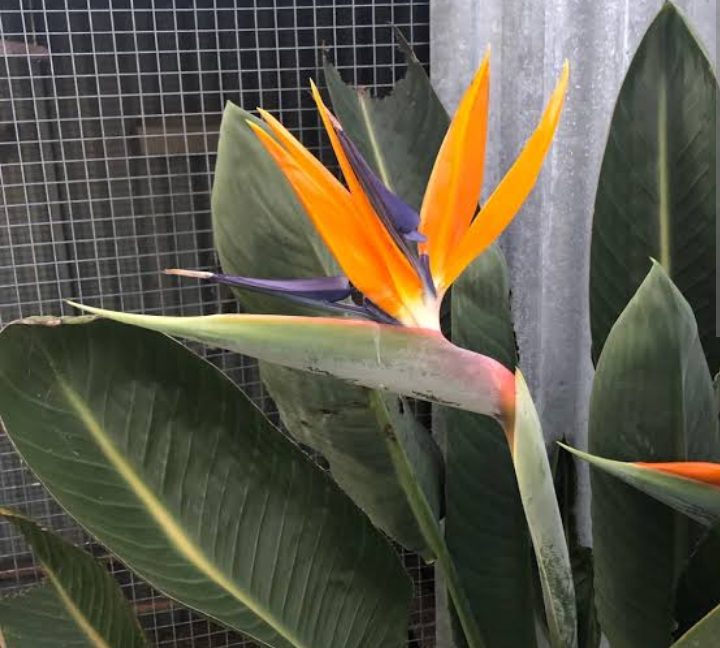
is a large, striking and exotic plant. It can reach 30 feet in height, with leaves reaching 8 feet in length and arranged in a fanlike pattern. In containers, however, the white bird of paradise stays smaller, growing 15 feet or less. The large 12-inch white, cream or pale grey flowers display a striking blue tongue.
It can be used to accent tall pillars near a home’s entrance, add a tropical note as a backdrop in a mixed bed, or as a striking container plant on the patio or pool deck. Leaves of a white bird of paradise can become chewed up from wind damage, making the plant unattractive. Try to place it in an area protected from strong winds.
Fiddle-leaf fig

The fiddle-leaf fig is a popular indoor tree featuring very large, heavily veined, and glossy violin-shaped leaves that grow upright on a sleek trunk. A fiddle-leaf fig is perfect as a focal point of a room if you can situate it in a floor-standing container where the plant is allowed to grow to at least 6 feet tall.
The common fig is a deciduous tree. In spring, new leaves bud out and by early summer they cover the tree. In the fall, edible fig trees shed all their leaves and remain leafless through the winter. Some other ficus species are evergreen, retaining their leaves year round.
Monstera deliciosa
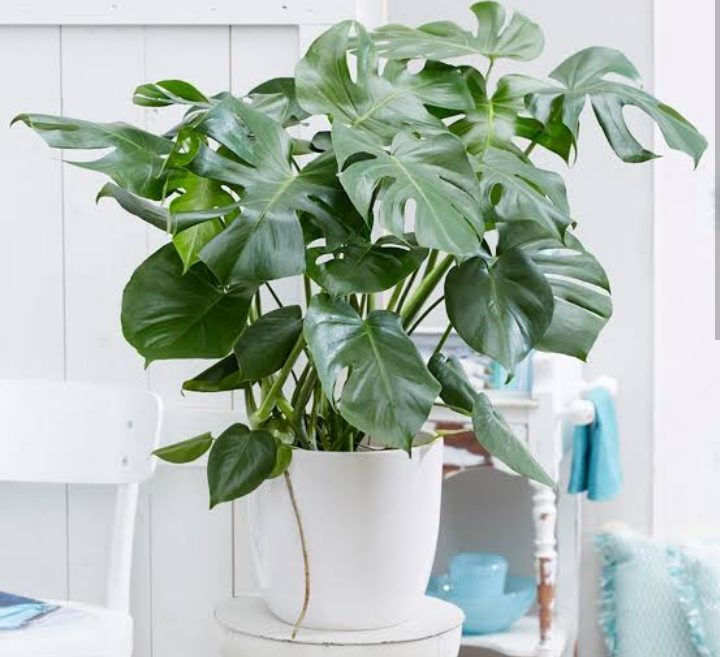
Split-leaf philodendron (Monstera deliciosa), sometimes referred to as the Swiss cheese plant, receives its common names in reference to the shape of its leaves. The oblong, heart-shaped leaves sport thick slits and random holes that become more pronounced with age. With the proper care, these tropical foliage plants will thrive and add a living lushness to your home’s interior.
Plant outdoors in the right zone at any time during the year and it will also produce tannish-cream flowers pollinated by bees and edible juicy fruit with the combined flavor of pineapple and banana. However, fruiting is not common in houseplants.
Philodendron Xanadu
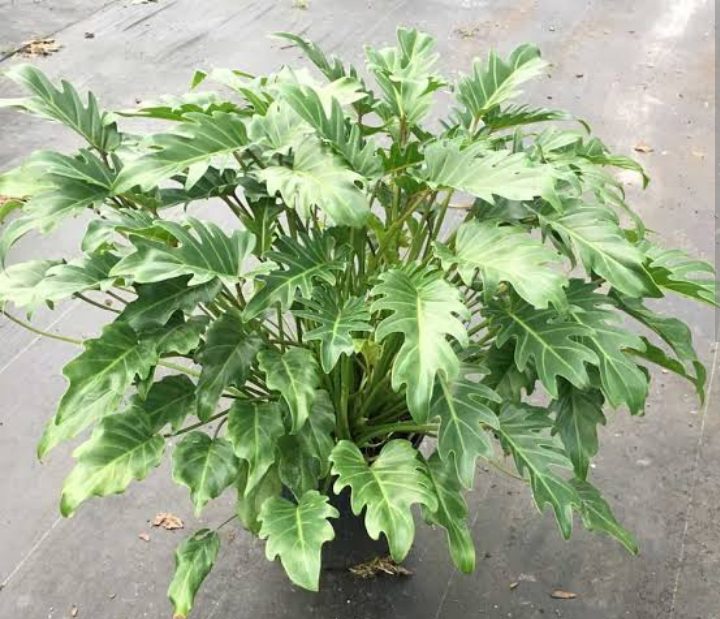
The Philodendron Xanadu, sometimes referred to as Philodendron “Winterbourn”, is a large compact plant that thrives indoors and in warm-weather landscapes. Unlike other varieties of philodendrons, they grow in clumps rather than climbing vines. Xanadu philodendron can reach a height of 2 to 4 feet with a width of 3 to 5 feet.
The expansive toothy, green foliage of Philodendron xanadu generates a tropical atmosphere whether grown as a houseplant or in a massed outdoor planting. This plant is easy to grow and increases in elegance as it ages. It’s airy, upright growth remains contained and doesn’t require staking or other support.
Rubber tree

Also known as rubber shrub or India rubber fig, rubber tree (Ficus elastica) is an evergreen shrub or tree with thick, leathery leaves that may be up to 12 inches long and 5 inches wide. Amazingly, they can reach heights of 50 to 100 feet in their natural habitat. Rubber tree plants tolerate all types of soil as long as it’s well drained.
Rubber tree plants exude a sticky white sap whenever branches or leaves break. This sap can irritate the skin, and if eaten, cause indigestion. Caring for a rubber tree involves basic, periodic maintenance to ensure it remains healthy and thrives.
Philodendron gloriosum
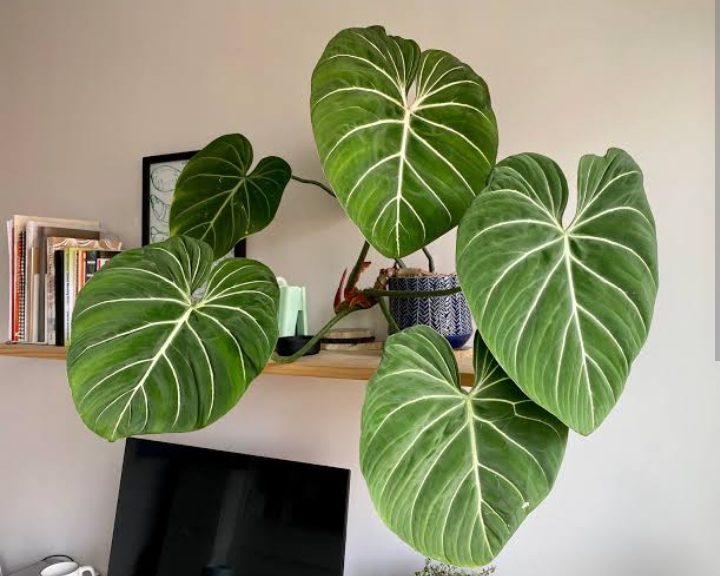
Philodendron gloriosum is a stunningly gorgeous species in the Philodendron genus with mesmerizing, heart-shaped, velvety leaves. This vulnerable Colombian native isn’t a climbing epiphyte like many species in the genus. Instead, the heartleaf-shaped, velvety foliage with eye-catching white veins has a creeping, ground-crawling habit.
Part of the appeal of this plant is its forgiving, low-maintenance nature. It’s the perfect tropical houseplant for even the most brown-thumbed plant lover.
Calathea orbifolia
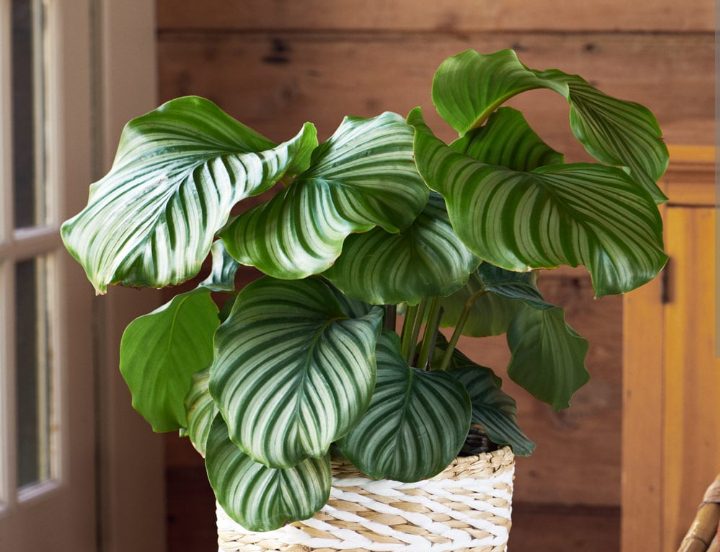
Calathea orbifolia is an ornamental plant with an exquisite beautiful large, round leaves and its air-purifying qualities. It is one of the largest calathea varieties. This beautiful foliage is subtly striped with pale silver-green markings, with the undersides of the leaf also being a pale silver-green.
Plants kept in ideal growing conditions grow quickly and enthusiastically and should be kept in a space that allows plenty of room for growth. Calathea are also referred to as prayer plants are because they close their leaves as if in prayer at night. The leaves unfold again in the morning light.
Tropic Snow Dumb Cane
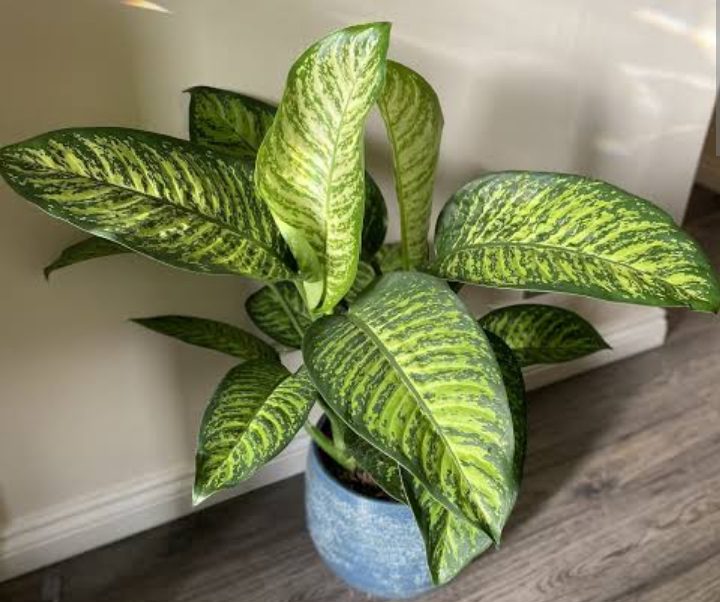
Tropic Snow Dumb Cane (Dieffenbachia amoena ‘Tropic Snow’) is one of the largest and most beautiful of the dieffenbachia plants. The common name “Dumb Cane” come from the fact that the juice from this plant paralyses the vocal chords!
The stalks of the tropic snow plant resemble canes with large, oblong green leaves that are variegated with white or cream. This robust plant is native to Brazil and can grow up to 6 feet or more. Place it in a large container and make a bold, decorative impact.
Rex Begonia

Rex begonias are rhizomatous begonias. Although they are cultivated primarily for their foliage, Rex begonias bear flowers, which are small. The plants have a mounding growth habit and keep a tidy form. Their leaves show diverse sizes, colors, patterns and textures, depending on the cultivar.
Although rex begonias like sun, avoid placing the plants in locations where they will receive direct light from hot sun. Whether they are indoor or outdoor plants, filtered sunlight is best. If they are indoors, an east-facing window is best. Drying out from too much sunlight can cause crisping leaves in a rex begonia.